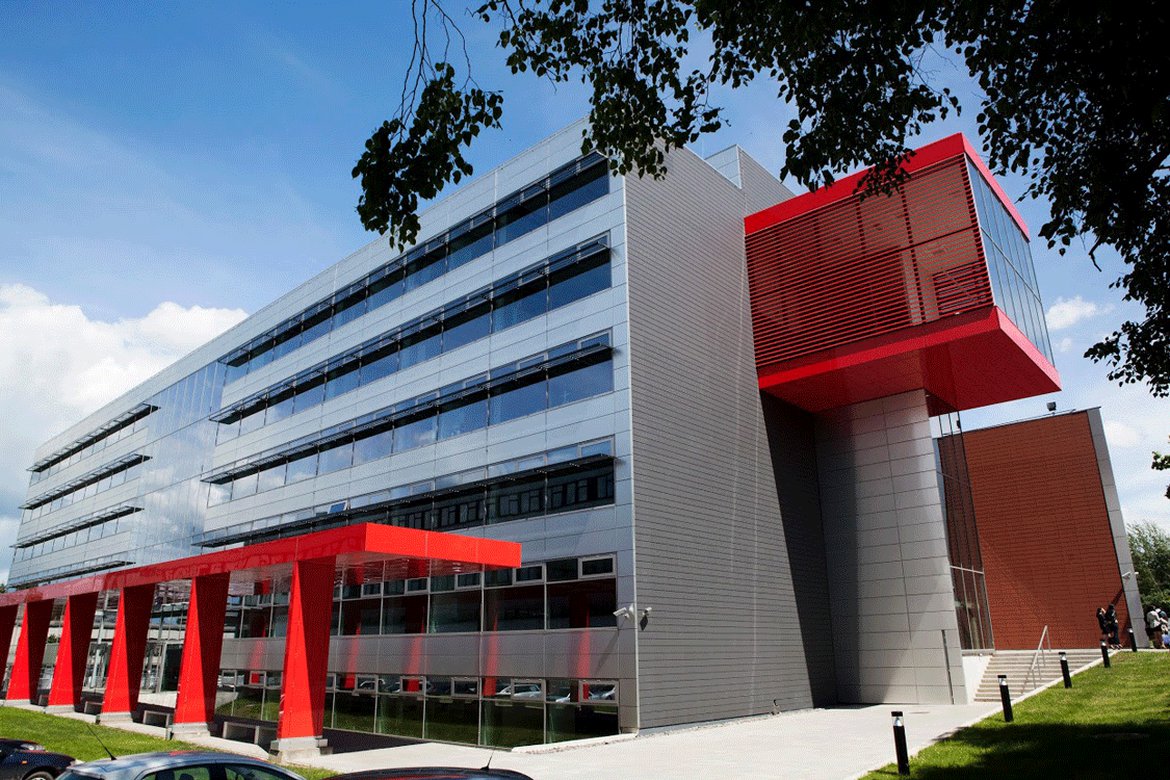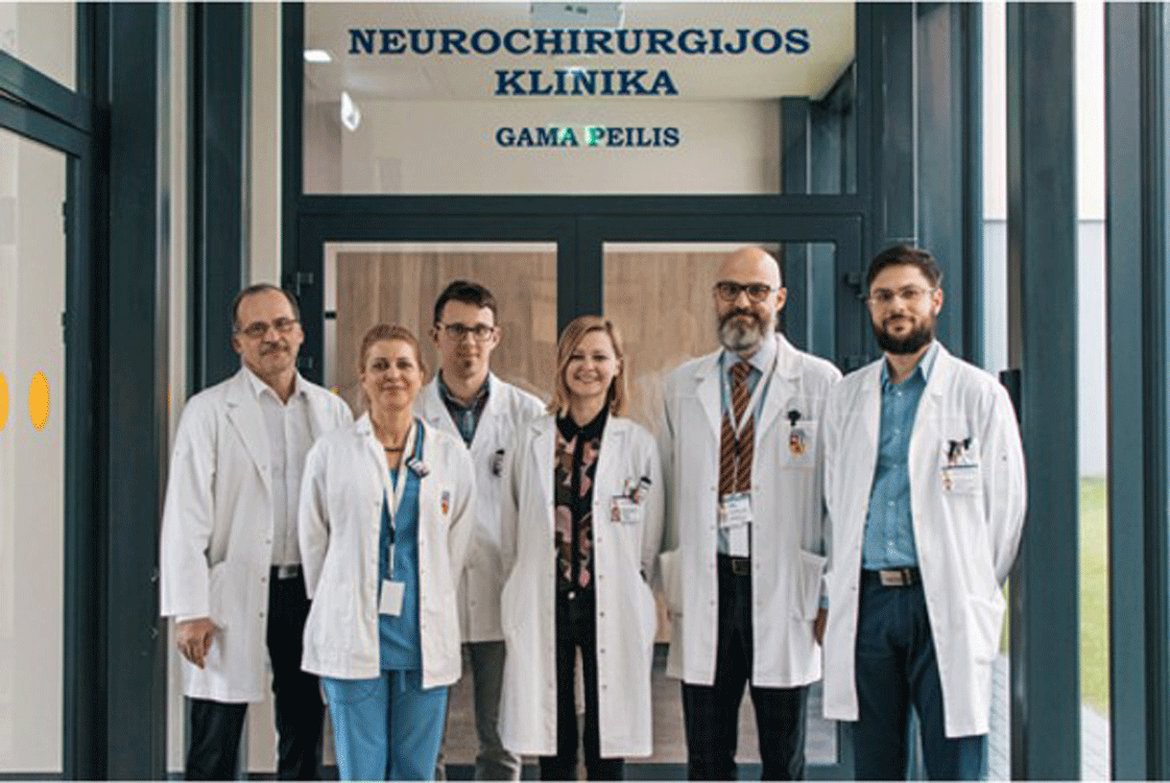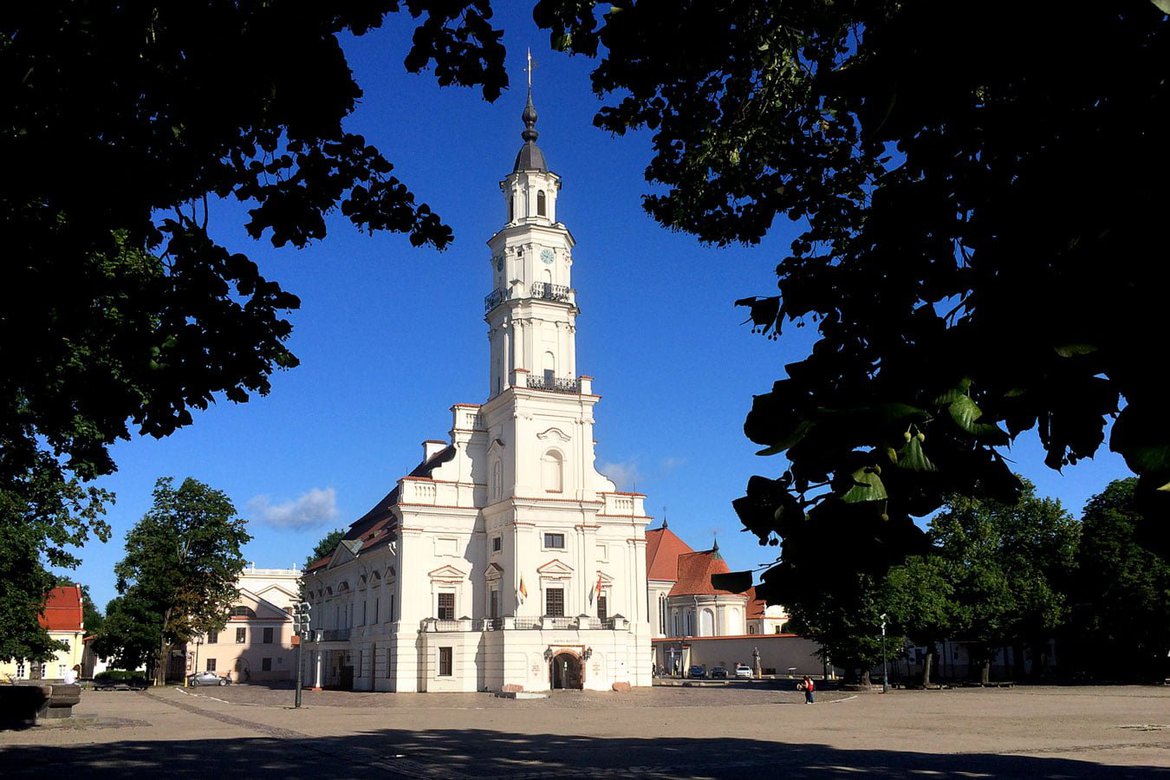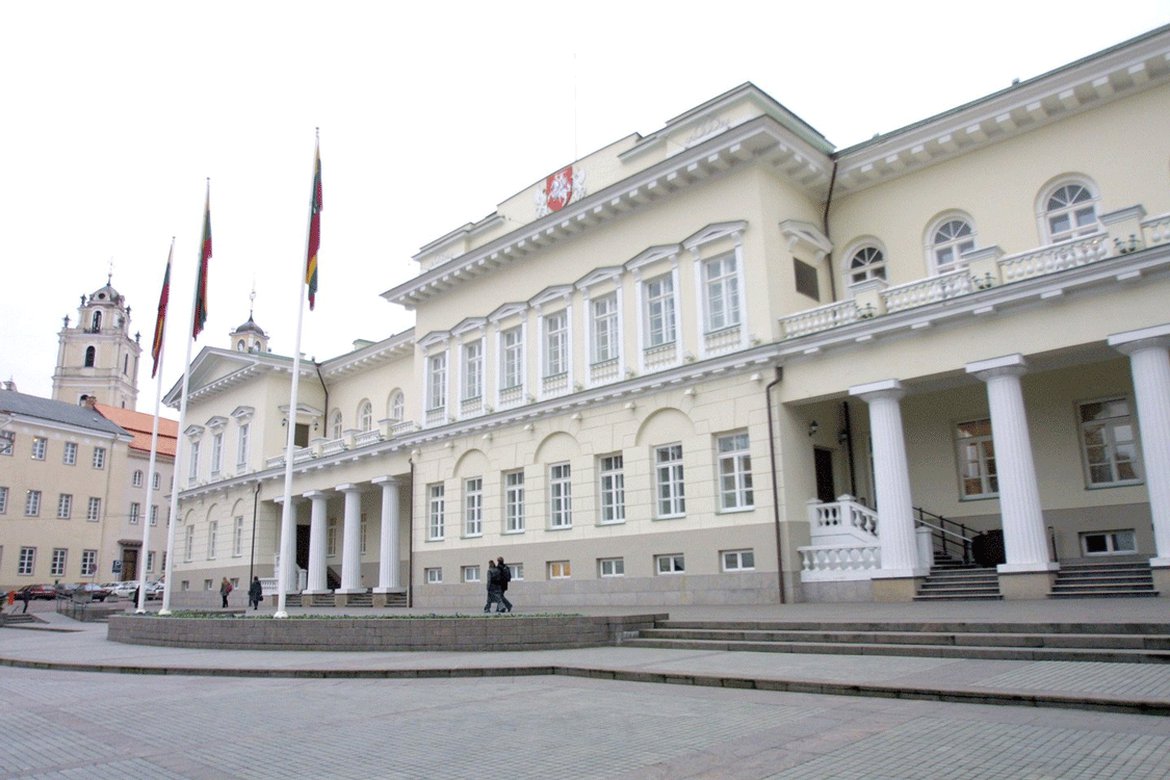Young Researchers Event 2021
EBRAINS for next-generation brain medicine
26–27 May 2021 | Virtual Event
Scientific Programme YRE 2021 1.4 MB

© Background Picture: EBRAINS
FAQs & all you need to know
Registration was mandatory and was open until 12 May 2021.
Attendance was open to anyone and free of charge.
After you signed up for the main conference you will receive an email with a link to the workshop registration.
The link to our virtual conference platform as well as the online credentials will be sent out to all registered participants a few days prior to the event.
To make this virtual event an interactive experience, it is important that you have access to a stable internet connection, good audio (with microphone) and ideally (not mandatory) a webcam for video communication.
Also, to have the full conference experience it is important that you have installed the Zoom Desktop Client application (v5.3.0 or higher) and that you access the conference platform via the latest version of Google Chrome.
If you have any questions about the event, please contact us at workshop.edu@humanbrainproject.eu.
All times in the programme schedule are UTC+2 = CEST.
To prevent missed sessions, we recommend to use a time zone converter in advance.
Brain diseases represent a considerable social and economic burden: 6 in 10 disorders with the highest DALYs (Disease-Adjusted Life Years), a health metric that calculates as the sum of years of life lost and years lived with a disability, are related to the brain. To develop new diagnostics and therapies, it is necessary to get deeper insights into brain organisation. The Human Brain Project unites researchers and scientists from multiple fields to decode the relationship between brain structure and function, and its role in disease, with the help of highly advanced ICT tools. Therefore, the HBP is developing EBRAINS, a digital research infrastructure and open source platform that allows scientists to seamlessly collaborate, to analyze data of healthy subjects and patients, to explore them in the Human Brain Atlas, and to share data and tools. This allows accelerating advancements in the fields of brain research and brain-related medicine.
HBP and EBRAINS together with the Lithuanian University of Health Sciences invited the entire scientific community, in particular early career researchers, to join the Young Researchers Event 2021. During this two-day virtual conference participants had the chance to explore how EBRAINS supports the next generation of brain medicine. Topics like brain atlasing and simulation, translational neuroscience and AI applications were addressed in interactive plenaries and hands-on workshops. The event also offered ample networking opportunities for participants to connect with peers as well as renowned experts.
Registration for this event is closed.
In case you want to receive further information about the HBP & EBRAINS and future opportunities, please express your interest.
Wednesday, 26 May 2021 | 15:40–17:00 CEST (GMT+2)
Emerging sciences and technologies such as brain research, information technologies, robotics and Artificial Intelligence entail promises of helping to achieve the United Nations’ Sustainable Development Goals and address Grand societal challenges in areas such as health, energy and environment. At the same time, they are characterized by uncertainty about their future impacts. This session aims to facilitate reflection of participants on societal and ethical aspects of their own research and innovation by building on neuroethics, Responsible Research and Innovation (RRI), and dual use related research and practices in the context of the Human Brain Project and EBRAINS research infrastructure. Firstly, the session will raise awareness about the RRI, namely, the alignment of research and innovation with societal needs, interests and values. Secondly, it will introduce dual use and misuse issues by highlighting how research and innovation can be used not only for beneficial but also harmful political, security, commercial and other purposes. The participants will have an opportunity to discuss how to facilitate beneficial and mitigate harmful uses of research and innovation by, for example, building networks of responsibility.
Workshop Chair & Tutors:
Chair:
Inga Ulnicane | De Montfort University
Tutors:
Inga Ulnicane | De Montfort University
Manuel Guerrero | Uppsala University
George Ogoh | De Montfort University
Preparations:
No prior preparation but to get an idea of the topic, feel free to have a look at our Social Ethical Reflective webpage.
Modern neuroimaging using magnetic resonance imaging (MRI) provides a comprehensive insight into the structure and functioning of human brain and allows for the analysis of factors influencing the brain in large populations of individuals, both healthy and diseased. To decode the variability of the aging brain and its underlying mechanisms current studies mostly focus on very specific aspects of the brain, i.e. gray matter volume, functional or structural connectivity. However, to understand the brain as a system, heterogeneous multilevel information of distinct levels of granularity might be needed at molecular, cell and system levels, i.e., ranging from macro to microscopic scales.
The goal of this hands-on session is to experience how the EBRAINS multilevel brain atlas can be used to extract such multilevel information about regions of interest derived from large-scale neuroimaging studies, e.g. brain activation maps derived from resting-state or task-based functional MRI, from atlases within the same reference space. Based on small use-cases, participants will be introduced to the EBRAINS tool and learn how to use it to extract and integrate different facets of the brain’s organization in daily research.
Workshop Chair & Tutors:
Chairs:
Svenja Caspers | Institute for Anatomy I, Medical Faculty & University Hospital Düsseldorf, Düsseldorf, Germany & Institute of Neuroscience and Medicine (INM-1), Research Centre Jülich, Jülich, Germany
Christiane Jockwitz | Institute of Neuroscience and Medicine (INM-1), Research Centre Jülich, Jülich, Germany & Institute for Anatomy I, Medical Faculty & University Hospital Düsseldorf, Düsseldorf, Germany
Tutors:
Christiane Jockwitz | Institute of Neuroscience and Medicine (INM-1), Research Centre Jülich, Jülich, Germany & Institute for Anatomy I, Medical Faculty & University Hospital Düsseldorf, Düsseldorf, Germany; c.jockwitz@fz-juelich.de
Nora Bittner | Institute for Anatomy I, Medical Faculty & University Hospital Düsseldorf, Düsseldorf, Germany & Institute of Neuroscience and Medicine (INM-1), Research Centre Jülich, Jülich, Germany, n.bittner@fz-juelich.de
Johanna Stumme | Institute for Anatomy I, Medical Faculty & University Hospital Düsseldorf, Düsseldorf, Germany & Institute of Neuroscience and Medicine (INM-1), Research Centre Jülich, Jülich, Germany, j.stumme@fz-juelich.de
Max. no. of participants: 30
Preparations:
Participants need to have Firefox or Google Chrome installed
Participants learn how The Virtual Brain Cloud (TVB-Cloud) enables neuroscience data integration in the cloud through personalized brain simulation in compliance with the EU General Data Protection Regulations. We will step by step demonstrate the data protection mechanisms implemented in our multi-scale simulation workflows and image processing pipelines comprising e.g. authentication, encryption, sandboxing. We will give an overview of GDPR principles, and discuss prerequisites for lawful processing of individual brain data - that is personal health data - and thus falls under particular protection. Examples of data sharing agreements and patient consents as a foundation of lawful personalized brain simulations will be provided. The workshop is participatory. All workflows are available on EBRAINS and can be operated through the Collab.
Workshop Agenda:
- The Virtual Brain – Simulation as a Service on the EBRAINS platform
- Multiscale co-simulation software
- Multiscale co-simulation application: Virtual Deep Brain stimulation
- Refining brain models with knowledge from molecular pathway inventories and brain atlases
Workshop Chair & Tutors:
Chair:
Petra Ritter | Charité University Medicine Berlin
Tutors:
Konstantin Bülau | Charité University Medicine Berlin
Leon Martin | Charité University Medicine Berlin
Jil Meier | Charité University Medicine Berlin
Dionysios Perdikis | Charité University Medicine Berlin
Michael Schirner | Charité University Medicine Berlin
Leon Stefanovski | Charité University Medicine Berlin
Thursday, 27 May 2021 | 15:10–16:30 CEST (GMT+2)
The EBRAINS Research Infrastructure provides services for finding and sharing neuroscience research data as well as comprehensive atlases of the human, rodent and mouse brain. In this hands-on session, we will introduce tools and workflows for finding datasets and interacting with the human brain atlas.
There is a broad consensus among researchers, publishers and funding bodies that open sharing of data is needed to address major reproducibility and transparency challenges that currently exist in all scientific disciplines. EBRAINS offers access to curated data and models discoverable and comparable across modalities according to the FAIR guiding principles.
The EBRAINS multilevel human brain atlas integrates maps that capture different facets of human brain organisation, in a common framework. It is defined across multiple reference spaces, zooming in from the millimeter scale in the MNI space to the micrometer level of the BigBrain. The atlas currently links cytoarchitectonic areas with ultra-high resolution BigBrain data, fiber bundles from MRI tractography, maps of functional modules, and a whole range of multimodal data features associated to various brain regions. The range and scope of available maps and features is constantly increasing. As the amount of data constituting the human atlas exceeds the disk capacity of most computers, it is designed as an online framework that you can access in a number of ways through the siibra toolsuite. The main entry point is our interactive 3D viewer (siibra explorer), which allows to explore the different facets of the atlas in 3D and to select specific data features for download. Programmatic interfaces, including a Python library (siibra-python) and HTTP API (siibra-API) are currently in development, with pre-releases available for interested users.
We will talk about the development of key parts of this atlas: Maps and 3D models of the human brain, derived from microscopic resolution of histology using state of the art machine learning and “big data” technologies. We will then walk you through the main features of the different interfaces of the EBRAINS atlas, introducing you to typical scientific use cases.
Workshop Chairs & Tutors:
Maja A. Puchades | University of Oslo
Timo Dickscheid | Forschungszentrum Jülich
Preparations:
The participants should have a recent version of either Chrome of Firefox browsers installed.
EBRAINS is a European research infrastructure for neuroscience which allows scientists to explore data, create models of the brain, simulate and analyze brain behaviour at multiple scales, connect to high performance computing or brain inspired computing technologies, and share data and experiments with the community in an easy and robust way. This workshop will provide a quick overview of the different tools and services available in EBRAINS. It will address, in an interactive way, how to use EBRAINS for specific use cases from the participants and focus on exploring all the potential that EBRAINS, as a digital research infrastructure, provides to its users. Young researchers will have the opportunity to get creative and combine the different EBRAINS components to respond to existing questions and formulate new avenues based on collaboration, sharing, co-design, and innovation.
Workshop Chairs & Tutors:
Chair:
Sandra Diaz Pier | Forschungszentrum Jülich
Tutors:
Sandra Diaz Pier | Forschungszentrum Jülich
Wouter Klijn | Forschungszentrum Jülich
Claudia Bachmann | Forschungszentrum Jülich
Preparations:
No preparation required but this will be a very interactive workshop so participants are expected to bring questions on how to use EBRAINS for their own research
The MIP is an interoperable IT platform for privacy-preserving, federated data processing and analytics on EBRAINS, enabling scientific work on anonymised and aggregated real patient data. The ambition is to leverage sharing and optimal use and re-use of health data for clinical purposes and for research and innovation. Specific Federations established on the MIP to support e.g. testing of biomarkers / predictive models in « real » clinical settings (e.g. Alzheimer’s) or in general to facilitate discovery of new findings by increasing sample size and thus the statistical relevance of new experiments of research cohorts (e.g. TBI). In this hands-on session participants will get an introduction to data federation and its benefits, will learn about the MIP Federations and the analysis that can be performed with the MIP, and will have the possibility to test the platform performing guided analysis, showcasing the benefits of using a federation system.
Workshop Chair & Tutors:
Chairs:
Philippe Ryvlin | CHUV, Switzerland
Birgit Schaffhauser | CHUV, Switzerland
Erika Borcel | CHUV, Switzerland
Tutors:
Laith Abu-Nawwas | CHUV, Switzerland
Erika Borcel | CHUV, Switzerland
Stefano Finazzi | Mario Negri Institute for Pharmacological Research, Italy
Emrah Kavun | CHUV, Switzerland
Melanie Leroy | Centre Hospitalier Universitaire de Lille, France
Philippe Ryvlin | CHUV, Switzerland
Birgit Schaffhauser | CHUV, Switzerland
Manuel Spuhler | CHUV, Switzerland
Description:
Do you have a vision for your career? What are the most important skills to develop an academic career according to Principal Investigators? And most importantly, how did these Principal Investigators develop their careers?
Especially for early-stage researchers, career development is important and can also be difficult as humans tend to interact with other people who are similar to themselves, thus creating rather homogeneous personal networks. Advancing one’s professional career and / or searching for a new job can be such a problem if networks are too limited.
In this Career Chat, early-stage researchers will first get to know the HBP’s activities and measures related to Career Development. Early-stage researchers then have the chance to learn from two expert Principal Investigators, Svenja Caspers (Forschungszentrum Jülich) & Benjamin Weyers (University of Trier) how they developed their careers: Svenja & Benjamin will share their personal experiences and participants can ask them anything related to career development. They will engage in a conversation with participants about success factors and relevant skills for academic careers, how to manage a life-domain-balance, or find support in academia.
Structure:
• Career Development in the HBP (among others, the HBP High Potential Mentoring Programme).
• Career Chat with Principal Investigators who share their experiences and advice.
Learning outcomes:
Participants of the workshop will
• get to know success factors and challenges for scientific and alternative career options.
• gain information on measures for Career Development in the HBP.
• learn from PIs who share their own experiences.
Workshop Chair & Tutor:
Moderator:
Julia Trattnig | convelop
Speakers:
Svenja Caspers | Forschungszentrum Jülich
Benjamin Weyers | University of Trier

Prof. Katrin Amunts did a postdoctoral fellowship at the C. & O. Vogt Institute of Brain Research at Duesseldorf University, Germany. In 1999, she set up a new research unit for Brain Mapping at the Research Center Juelich, Germany. In 2004, she became professor for Structural-Functional Brain Mapping, and in 2008 a full professor at the Department of Psychiatry, Psychotherapy and Psychosomatics at the RWTH Aachen University as well as director of the Institute of Neuroscience and Medicine (INM-1) at the Research Center Juelich. Since 2013, she is a full professor for Brain Research, director of the C. and O. Vogt Institute of Brain Research, Heinrich-Heine University Duesseldorf and director of the Institute of Neuroscience and Medicine (INM-1), Research Center Juelich. Katrin Amunts is the programme speaker of the programme Decoding the Human Brain of the Helmholtz Association, Germany. Since 2017 Katrin Amunts is co-speaker of the graduate school Max-Planck School of Cognition and since 2018 she is a member of the International Advisory Council Healthy Brains for Healthy Lives, Canada.
Since 2016, she is the Scientific Research Director and Chair of the Science and Infrastructure Board (SIB) European Flagship, The Human Brain Project (HBP).
In order to better understand the organizational principles of the human brain, she and her team aim to integrate cyto-, receptorarchitectonic, genetic and functional as well as PLI-based maps into a multimodal atlas, which contributes to EBRAINS, the research infrastructure of the HBP. Central to her approach are the development and application of methods of high-performance computing to generate ultra-high resolution human brain models such as the BigBrain, and the Juelich-Brain, a cytoarchitectonic atlas reflecting variations in brain structure.
Sessions: Welcome & Introduction to HBP & EBRAINS | Closing Remarks by HBP & EBRAINS
 Rimantas Benetis – professor, PhD, cardiac surgeon, Rector of the Lithuanian University of Health Sciences, Head of Department of Cardiothoracic and Vascular Surgery. The professor was a leader of the cardiac surgery team which completed the first heart transplantation in Kaunas and the first lung and heart-lung transplantation in the Baltic States. He received following awards: the Cross of the Officer of the Order for Merits to Lithuania, the Cross of the Officer of the Order of the Lithuanian Grand Duke Gediminas. Professor is a member of the Lithuanian Society of Thoracic and Cardiac Surgery, member of the European Association of Cardio-Thoracic Surgery (EACTS), member of the European Valve Repair Group (EVRG).
Rimantas Benetis – professor, PhD, cardiac surgeon, Rector of the Lithuanian University of Health Sciences, Head of Department of Cardiothoracic and Vascular Surgery. The professor was a leader of the cardiac surgery team which completed the first heart transplantation in Kaunas and the first lung and heart-lung transplantation in the Baltic States. He received following awards: the Cross of the Officer of the Order for Merits to Lithuania, the Cross of the Officer of the Order of the Lithuanian Grand Duke Gediminas. Professor is a member of the Lithuanian Society of Thoracic and Cardiac Surgery, member of the European Association of Cardio-Thoracic Surgery (EACTS), member of the European Valve Repair Group (EVRG).
Session: Welcome by the Lithuanian University of Health Sciences
 Her M.Sc. in Psychology received Dr. rer. nat. Nora Bittner from the University of Duesseldorf, Germany in 2014. During her PhD she investigated how lifestyle relates to brain structure, estimated brain age and structural connectivity of older adults at the Institute of Neuroscience and Medicine (INM-1), Research Center Juelich, Germany and the University of Duesseldorf.
Her M.Sc. in Psychology received Dr. rer. nat. Nora Bittner from the University of Duesseldorf, Germany in 2014. During her PhD she investigated how lifestyle relates to brain structure, estimated brain age and structural connectivity of older adults at the Institute of Neuroscience and Medicine (INM-1), Research Center Juelich, Germany and the University of Duesseldorf.
In her current position as a Post-Doc at the Institute of Anatomy I, Heinrich-Heine-University Dusseldorf, Germany and the Connectivity group of the INM-1 (Research Centre Juelich), the focus of her research remains on lifestyle factors, which may influence the structural and functional organization of the brain, especially during older ages. Here, she investigates a multitude of factors, ranging from risk factors such as metabolic syndrome or working conditions to protective behaviors such as healthy diet and physical activity within the 1000BRAINS cohort. To obtain a more multimodal characterization of the older brain in relation to these lifestyle factors, she now focuses more on differences in structural connectivity.
Workshop: Deep characterization of brain-phenotype relations using the EBRAINS multilevel atlas
Dr Adomas Bunevičius is a neurosurgeon, and his research area is neuro-oncology. In addition to the conventional scientific projects on neuro-oncology patient clinical data analysis, he initiated a new approach of cancer patient monitoring using IT technologies.
Young Researchers Presentation: Digital phenotyping in neuro-oncology
Cancer is a major cause of morbidity and mortality worldwide. Increasing adoption of targeted therapies have significantly improved long-term prognosis of cancer patients thus underscoring the importance of continuous and automated monitoring of disease progression and treatment side effects of long-term cancer survivors. The COVID-19 pandemic has further underscored the importance of tele-health in cancer patient care. Cancer patient monitoring using passively acquired data streams from smartphones and/or wearable device is a promising methods allowing high-resolution continuous monitoring of cancer progression and treatment adverse events. Integration of digital phenotyping strategies with clinically relevant actively acquired data streams and advanced data analytics can open new avenues to optimized care of cancer patients.
 Svenja Caspers studied medicine, business studies and economics. After finalizing her MD thesis on the microarchitecture of the human inferior parietal lobule and conducting her PhD on neural resources of decision making, she focused her postdoc phase at the Institute of Neuroscience and Medicine of the Research Centre Jülich (Germany) on the structure-function relationship in human association cortices, using multimodal magnetic resonance imaging and postmortem microscopy techniques. In 2012, she became team leader for 1000BRAINS, a large population-based cohort study on variability of brain structure, function and connectivity of the aging brain in the Research Centre Jülich. Her research focus thus moved towards brain aging research in light of environmental and lifestyle influencing factors in large cohorts, using high-throughput analyses via high-performance computing facilities. Becoming an Associate Professor for Connectivity in the Human Brain at the University of Düsseldorf (Germany) as well as group leader of the Connectivity Group and Deputy Director in the Research Centre Jülich in 2015, she is now (since 2018) Full Professor for Anatomy and Director of the Institute for Anatomy I at the University of Düsseldorf, continuing her position in Jülich. Since 2020, she is holds the position as Vice Dean for Teaching and Study Quality at the Medical Faculty of the University Düsseldorf.
Svenja Caspers studied medicine, business studies and economics. After finalizing her MD thesis on the microarchitecture of the human inferior parietal lobule and conducting her PhD on neural resources of decision making, she focused her postdoc phase at the Institute of Neuroscience and Medicine of the Research Centre Jülich (Germany) on the structure-function relationship in human association cortices, using multimodal magnetic resonance imaging and postmortem microscopy techniques. In 2012, she became team leader for 1000BRAINS, a large population-based cohort study on variability of brain structure, function and connectivity of the aging brain in the Research Centre Jülich. Her research focus thus moved towards brain aging research in light of environmental and lifestyle influencing factors in large cohorts, using high-throughput analyses via high-performance computing facilities. Becoming an Associate Professor for Connectivity in the Human Brain at the University of Düsseldorf (Germany) as well as group leader of the Connectivity Group and Deputy Director in the Research Centre Jülich in 2015, she is now (since 2018) Full Professor for Anatomy and Director of the Institute for Anatomy I at the University of Düsseldorf, continuing her position in Jülich. Since 2020, she is holds the position as Vice Dean for Teaching and Study Quality at the Medical Faculty of the University Düsseldorf.
Panel Session I: Interindividual variability of brain phenotypes – towards population neuroimaging & brain models
The human brain as well as the respective cognitive abilities show a pronounced interindividual variability which are considerably evident during the aging process and thus in the older adult brain. Influences beyond the factor ‘age’ itself need to be considered when trying to understand this variability in brain structure, function and connectivity. These include genetic as well as lifestyle and environmental factors and their complex interplay. Since the effect of each single factor might be small, large population-based cohorts are needed to capture these individual influences. The talk will show some examples from a large cohort of older subjects of the Research Centre Jülich, the 1000BRAINS study, as well as the German National Cohort (NAKO). Examples will demonstrate the relevance and interplay of different influencing factors on brain structure, function and connectivity and will discuss the effects of data pooling as compared to large homogeneous studies. Current efforts within the HBP in terms of modelling population variability in aging and the usability of EBRAINS to interpret and integrate such data using the multilevel atlas will be exemplified.
Workshop: Deep characterization of brain-phenotype relations using the EBRAINS multilevel atlas
 Olivier David graduated in physics at Ecole Normale Supérieure de Cachan, and obtained a PhD from Université Paris Sud in signal processing applied to human neurophysiology at CNRS / La Salpêtrière Hospital. He did a post-doc at University College London where he developed a highly cited method for inferring properties of neuronal populations underlying brain oscillations (Dynamic Causal Modelling for MEG/EEG). He is now Director of Research at Inserm, France. he has been based at Grenoble Institute of Neuroscience between 2005 and 2020, and recently moved to the Institute of Systems Neuroscience, Marseille. The main topic of his current research is to understand the effects of brain stimulation on the organization of functional brain networks. He has published more than 150 articles in international peer-reviewed journals and integrated the Human Brain Project in 2018 on the Medical Informatics Platform. He is now the co-PI of the Human Intracerebral Platform and is also involved in the scientific workpackages 1 and 2.
Olivier David graduated in physics at Ecole Normale Supérieure de Cachan, and obtained a PhD from Université Paris Sud in signal processing applied to human neurophysiology at CNRS / La Salpêtrière Hospital. He did a post-doc at University College London where he developed a highly cited method for inferring properties of neuronal populations underlying brain oscillations (Dynamic Causal Modelling for MEG/EEG). He is now Director of Research at Inserm, France. he has been based at Grenoble Institute of Neuroscience between 2005 and 2020, and recently moved to the Institute of Systems Neuroscience, Marseille. The main topic of his current research is to understand the effects of brain stimulation on the organization of functional brain networks. He has published more than 150 articles in international peer-reviewed journals and integrated the Human Brain Project in 2018 on the Medical Informatics Platform. He is now the co-PI of the Human Intracerebral Platform and is also involved in the scientific workpackages 1 and 2.
Plenary session II: Functional tractography
Intracerebral electrical stimulation can be used during presurgical evaluations in patients with refractory focal epilepsies. The responses to such stimulations as recorded by stereoelectroencephalography provide very useful information about brain connectivity. In particular, it is the only modality to give some hints on axonal conduction delays and directionality of long range fibers. This talk will be about the latest results of the F-TRACT project (f-tract.eu) that gathered in international database of such responses to direct electrical stimulation, which leads to the development of a neurophysiological atlas of cortico-cortical connections. We will also discuss how these data integrate to the HBP atlas.

Chiara De Luca graduated in Physics in 2019. She is associated with the INFN APE laboratory in Roma for her research in the Human Brain Project and is now pursuing her PhD in Behavioural Neuroscience at La Sapienza University in Rome.
Young Researchers Presentation: Brain states and their cognitive features: experimental data and data-constrained simulations
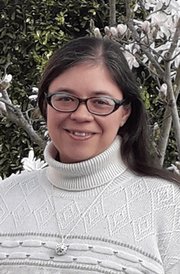 Sandra Diaz Pier works as graduate researcher at the Simulation and Data Laboratory Neuroscience of the Jülich Supercomputing Centre at the Forschungszentrum Jülich in Germany. She has been involved in the HBP since SGA2 and is part of different tasks including high level support and technical integration. She has also taken part in several activities related to the Education Program of the HBP including student conferences and workshops. Her research areas are efficient simulation and optimization of brain models on high performance computing, plasticity, and learning.
Sandra Diaz Pier works as graduate researcher at the Simulation and Data Laboratory Neuroscience of the Jülich Supercomputing Centre at the Forschungszentrum Jülich in Germany. She has been involved in the HBP since SGA2 and is part of different tasks including high level support and technical integration. She has also taken part in several activities related to the Education Program of the HBP including student conferences and workshops. Her research areas are efficient simulation and optimization of brain models on high performance computing, plasticity, and learning.
Workshop: Using EBRAINS for your scientific use cases
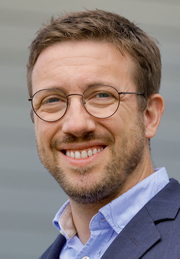
Timo Dickscheid is heading the "Big Data Analytics" group at the Institute of Neuroscience and Medicine (INM-1), Forschungszentrum Jülich, Germany. He graduated in Computer Science at the University of Koblenz in 2006, and earned his PhD in Computer Vision and Photogrammetry at the University of Bonn in 2011 under the supervision of Prof. Wolfgang Förstner. In 2010, he joined Forschungszentrum Jülich as a post-doc in the lab of Katrin Amunts to work on medical image registration and segmentation for histological brain sections. After accepting a position as the head of Information Technology at the German Federal Institute of Hydrology in Koblenz in 2012, Timo returned to Jülich in 2014. His research group focuses on biomedical image analysis and neuroinformatics methods for building high-resolution 3D models of the human brain, and constitutes a local pillar of the national artificial intelligence research network “Helmholtz AI”. In the Human Brain Project (HBP), Timo leads the EBRAINS atlas service category (SC2), which includes the development of brain reference atlases and the corresponding software interfaces for exploration, data integration and data analysis.
Workshop: EBRAINS data sharing and use of multilevel human brain atlases

Karin Grasenick graduated in Computer Science and Biomedical Engineering. Her thesis on innovative non-invasive techniques to measure stroke volume led to a growing interest in inter- and transdisciplinary research, diversity in research content and equal opportunities in science. She lectures, coaches and supports teams, universities and international projects in diversity and change management. In HBP, she actively supports the recognition of diversity as a success factor for research and innovation. Together with her team she provides tools and techniques for researchers accordingly.
Career Chat: How to develop a brainy career
 Dr Manuel Guerrero is a sociologist and bioethicist with extensive experience in human rights. He holds a PhD in Sociology and Postgraduate Diplomas in Medical Ethics and Research Ethics. He is a researcher at the Centre for Research Ethics & Bioethics (CRB) at Uppsala University and Assistant Professor of Bioethics at the Department of Bioethics and Medical Humanities in the Faculty of Medicine and Ethics at the Centre for Applied Ethics in the Faculty of Philosophy and Humanities at the University of Chile. Since 2016 is H2020 Human Brain Project's (EU FET Flagship) Ethics Rapporteur Programme's lead; co-chair of its Dual Use Working Group and member of its Education Programme Committee. His research activities combine philosophy, social sciences and neuroethics, with a focus on the ethical and social implications of brain research and neurotechnologies and the promotion of Responsible Research and Innovation (RRI).
Dr Manuel Guerrero is a sociologist and bioethicist with extensive experience in human rights. He holds a PhD in Sociology and Postgraduate Diplomas in Medical Ethics and Research Ethics. He is a researcher at the Centre for Research Ethics & Bioethics (CRB) at Uppsala University and Assistant Professor of Bioethics at the Department of Bioethics and Medical Humanities in the Faculty of Medicine and Ethics at the Centre for Applied Ethics in the Faculty of Philosophy and Humanities at the University of Chile. Since 2016 is H2020 Human Brain Project's (EU FET Flagship) Ethics Rapporteur Programme's lead; co-chair of its Dual Use Working Group and member of its Education Programme Committee. His research activities combine philosophy, social sciences and neuroethics, with a focus on the ethical and social implications of brain research and neurotechnologies and the promotion of Responsible Research and Innovation (RRI).
Workshop: Aligning research and innovation with societal needs: ethics & dual use
 Viktor Jirsa is Director of the Inserm Institut de Neurosciences des Systèmes at Aix-Marseille-Université in Marseille, France. Dr. Jirsa received his PhD in 1996 in Theoretical Physics and Applied Mathematics and has since then contributed to the field of Theoretical Neuroscience, in particular through the development of large-scale brain network models based on realistic connectivity. His work has been foundational for network science in medicine with translations to clinical applications. Dr. Jirsa serves as scientific lead of the brain simulation platform The Virtual Brain (www.thevirtualbrain.org) and lead investigator in the Human Brain Project (https://www.humanbrainproject.eu/). Dr. Jirsa has been awarded several prizes for his research including the Grand Prix de Recherche en Provence (2018) and has published more than 160 scientific articles.
Viktor Jirsa is Director of the Inserm Institut de Neurosciences des Systèmes at Aix-Marseille-Université in Marseille, France. Dr. Jirsa received his PhD in 1996 in Theoretical Physics and Applied Mathematics and has since then contributed to the field of Theoretical Neuroscience, in particular through the development of large-scale brain network models based on realistic connectivity. His work has been foundational for network science in medicine with translations to clinical applications. Dr. Jirsa serves as scientific lead of the brain simulation platform The Virtual Brain (www.thevirtualbrain.org) and lead investigator in the Human Brain Project (https://www.humanbrainproject.eu/). Dr. Jirsa has been awarded several prizes for his research including the Grand Prix de Recherche en Provence (2018) and has published more than 160 scientific articles.
Moderator Round table: EBRAINS for next-generation brain medicine
 Dr. rer. medic. Christiane Jockwitz obtained her M.Sc. in Cognitive and Clinical Neuroscience (Neuropsychology) from Maastricht University, the Netherlands in 2011. Afterwards, she did her PhD at the Institute of Neuroscience and Medicine (INM-1), Research Center Juelich, Germany on “Structure-Function Relationships in Resting-State-Networks of older adults”. Currently, Dr. Jockwitz is working as Post-Doc in the Connectivity group of the INM-1 (Research Centre Juelich) and Institute of Anatomy I, Heinrich-Heine-University & University Hospital Dusseldorf, Germany. In her research, Dr. Jockwitz investigates the structural and functional organization of the aging brain in relation to cognitive functions, especially during older ages. Dr. Jockwitz has expertise with population neuroimaging and is part of the study committee of the population-based cohort study 1000BRAINS investigating the inter-individual variability of the normal aging brain. In 2017, the Swiss National Science Foundation awarded her an International Short Visit at the University Research Priority Program “Dynamics of Healthy Aging” at the University of Zurich to cross-validate age-related changes in cognitive performance and brain structure in two large cohorts consisting of older adults.
Dr. rer. medic. Christiane Jockwitz obtained her M.Sc. in Cognitive and Clinical Neuroscience (Neuropsychology) from Maastricht University, the Netherlands in 2011. Afterwards, she did her PhD at the Institute of Neuroscience and Medicine (INM-1), Research Center Juelich, Germany on “Structure-Function Relationships in Resting-State-Networks of older adults”. Currently, Dr. Jockwitz is working as Post-Doc in the Connectivity group of the INM-1 (Research Centre Juelich) and Institute of Anatomy I, Heinrich-Heine-University & University Hospital Dusseldorf, Germany. In her research, Dr. Jockwitz investigates the structural and functional organization of the aging brain in relation to cognitive functions, especially during older ages. Dr. Jockwitz has expertise with population neuroimaging and is part of the study committee of the population-based cohort study 1000BRAINS investigating the inter-individual variability of the normal aging brain. In 2017, the Swiss National Science Foundation awarded her an International Short Visit at the University Research Priority Program “Dynamics of Healthy Aging” at the University of Zurich to cross-validate age-related changes in cognitive performance and brain structure in two large cohorts consisting of older adults.
Workshop: Deep characterization of brain-phenotype relations using the EBRAINS multilevel atlas
 Alexander Kroner is a PhD student at the Department of Cognitive Neuroscience (Maastricht University) with a background in Artificial Intelligence (M.Sc. from Maastricht University) and Cognitive Science (B.Sc. from Osnabrück University). His research revolves around the use of deep neural networks as a model of visual processing and attentional mechanisms in the brain. In particular, he focuses on the development and analysis of convolutional architectures for the task of saliency prediction. Within the Human Brain Project, this work is embedded as part of a closed sensorimotor loop that links complex visual input to eye movements in a neurorobotic system.
Alexander Kroner is a PhD student at the Department of Cognitive Neuroscience (Maastricht University) with a background in Artificial Intelligence (M.Sc. from Maastricht University) and Cognitive Science (B.Sc. from Osnabrück University). His research revolves around the use of deep neural networks as a model of visual processing and attentional mechanisms in the brain. In particular, he focuses on the development and analysis of convolutional architectures for the task of saliency prediction. Within the Human Brain Project, this work is embedded as part of a closed sensorimotor loop that links complex visual input to eye movements in a neurorobotic system.
Young Researchers Presentation: The role of low- and high-level features for visual saliency prediction
The study of eye movements allows researchers to investigate some of the mechanisms that guide the allocation of attention. When freely viewing natural images, observers do not randomly sample the scene but preferentially explore certain regions. However, the types of image features that attract fixations, and are hence more salient, have been a matter of debate. Early computational models leveraged low-level features inspired from biological insights, whereas current deep neural networks exploit the semanticity of high-level features to predict salient image regions. Understanding the contributions of both factors to eye movement patterns paves the way for exploring the neural mechanisms that give rise to this behavior.
 Dr Jean-François Mangin is the director of Baobab, the methodological research unit of Neurospin, the ultra-high field neuroimaging center of the CEA. He is also the funding director of the CATI platform dedicated to multicenter neuroimaging (http://cati-neuroimaging.com), which has supported over 40 clinical studies across France and Europe. Relying on a growing network of about 100 harmonised imaging facilities, the platform monitors acquisitions and performs centralised image analysis from a wide portfolio. He has been co-leader of the Strategic Human Brain Data sub-project of the Human Brain Project.
Dr Jean-François Mangin is the director of Baobab, the methodological research unit of Neurospin, the ultra-high field neuroimaging center of the CEA. He is also the funding director of the CATI platform dedicated to multicenter neuroimaging (http://cati-neuroimaging.com), which has supported over 40 clinical studies across France and Europe. Relying on a growing network of about 100 harmonised imaging facilities, the platform monitors acquisitions and performs centralised image analysis from a wide portfolio. He has been co-leader of the Strategic Human Brain Data sub-project of the Human Brain Project.
His primary scientific interest for 30 years has been the study of the variability of the folding pattern of the human cerebral cortex. His team has developed several generations of dedicated systems, which have been distributed to the community through the BrainVISA platform (http://brainvisa.info/). He was awarded in 2020 one of the Artificial Intelligence Chairs from the French national AI program.
Plenary Session II: A new generation of integrated brain atlas and its potential for clinical research
The HBP atlas is bridging different worlds that use to be difficult to interface (post mortem imaging, in vivo imaging, intracranial recording…). Multimodal atlases and outstanding datasets that come from these different worlds have been aligned into the reference spaces used in clinical research. They provide a very rich knowledge set for interpreting and annotating clinical results. The HBP atlas provides also the resources required to feed simulation-engine used for instance to support the planning of epilepsy surgery. Post mortem atlases include cytoarchitectonic and neuroreceptor maps, and will be enriched with ultrahigh resolution connectivity maps. In vivo atlases include the largest atlases of the long and short fiber bundles, and an atlas of functional areas inferred from subjects contributing to over 30 fMRI sessions. Finally, intracranial recording of hundreds of European patients provide samples of the high resolution dynamics of the human brain.
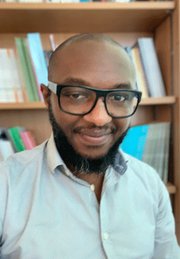
Dr George Ogoh is a Research Fellow at the Centre for Computing and Social Responsibility at De Montfort University. He has a background in Computer Information Systems and has obtained a PhD in Computing and Social Responsibility from De Montfort University. His research for the Human Brain Project (HBP) covers a wide range of ethics-related topics at the intersection of brain research and neurotechnology and include themes on Responsible Research and Innovation (RRI), responsible innovation, diversity and equality, data governance, and data protection.
Workshop: Aligning research and innovation with societal needs: ethics & dual use
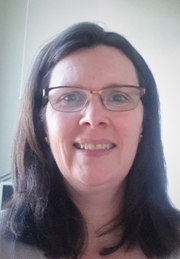 Maja A. Puchades is a senior researcher at the Institute of Basic Medical Sciences, University of Oslo, Norway. She received her PhD in 2003, from Gothenburg University, Sweden, with a thesis focused on developing proteomic methods for studying biomarkers of Alzheimer’s disease. After several post-doc periods working with different neurodegenerative disease models, she joined the Nesys laboratory, Univ. of Olso in 2015. The main research focus is development of software tools for analyses of rodent data in context of 3D reference atlases. In the Human brain project (HBP) and EBRAINS infrastructure, Puchades is deputy leader for the Brain atlas service and related tools and participate to the EBRAINS Curation team.
Maja A. Puchades is a senior researcher at the Institute of Basic Medical Sciences, University of Oslo, Norway. She received her PhD in 2003, from Gothenburg University, Sweden, with a thesis focused on developing proteomic methods for studying biomarkers of Alzheimer’s disease. After several post-doc periods working with different neurodegenerative disease models, she joined the Nesys laboratory, Univ. of Olso in 2015. The main research focus is development of software tools for analyses of rodent data in context of 3D reference atlases. In the Human brain project (HBP) and EBRAINS infrastructure, Puchades is deputy leader for the Brain atlas service and related tools and participate to the EBRAINS Curation team.
Workshop: EBRAINS data sharing and use of multilevel human brain atlas
 Petra Ritter heads the Brain Simulation Section at the Dept. of Neurology, Charité and Berlin Institute of Health. She is a full professor for Brain Simulation. Her research focus is on integrating neuroimaging and computational neuroscience to discover mechanisms of brain function and dysfunction. She has led local (Charité & BIH Virtual Research Environment[1]), national (Bernstein Focus), European (VirtualBrainCloud; Co-design Project The Virtual Brain in the EU Flagship HBP SGA2) and international neuroiformatics consortia (co-lead The Virtual Brain platform with >30k software downloads), is a participant in the national research data infrastructure initiative (NFDI) NFDI4Health and a co-speaker in NFDI-Neuro and a member of the European Open Science Cloud Architecture working group. She holds an ERC Consolidator grant and is engaged in several large-scale software projects. In the €15Mill funded EU project Virtual Brain Cloud and its local partnering project Virtual Research Environment, Ritter and collaborators develop a reference architecture for cross-institutional managing and processing of radiologic imaging and associated data in compliance with GDPR. Ritter’s Brain Simulation Section is GOLD member of the International Neuroinformatics Coordination Facility (INCF). Petra Ritter studied medicine at the Charité University Medicine Berlin. She spent a large part of her clinical traineeships and practical year abroad: at the universities UCLA and UCSD in Los Angeles and San Diego, the Mount Sinai School of Medicine in New York and the Harvard Medical School in Boston. In 2002, she received her license to practise medicine. In 2004, she completed her doctoral thesis at the Charité and in 2010 she received habilitation in Experimental Neurology. After being Max Planck Minerva research group leader from 2011 to 2015, she assumed the lifetime position of BIH Johanna Quandt Professor for Brain Simulation at Berlin Institute of Health (BIH) and Charité Universitätsmedizin Berlin, one of Europe’s largest university hospitals. Since 2017, she is Director of the Brain Simulation Section at Charité Universitätsmedizin Berlin.
Petra Ritter heads the Brain Simulation Section at the Dept. of Neurology, Charité and Berlin Institute of Health. She is a full professor for Brain Simulation. Her research focus is on integrating neuroimaging and computational neuroscience to discover mechanisms of brain function and dysfunction. She has led local (Charité & BIH Virtual Research Environment[1]), national (Bernstein Focus), European (VirtualBrainCloud; Co-design Project The Virtual Brain in the EU Flagship HBP SGA2) and international neuroiformatics consortia (co-lead The Virtual Brain platform with >30k software downloads), is a participant in the national research data infrastructure initiative (NFDI) NFDI4Health and a co-speaker in NFDI-Neuro and a member of the European Open Science Cloud Architecture working group. She holds an ERC Consolidator grant and is engaged in several large-scale software projects. In the €15Mill funded EU project Virtual Brain Cloud and its local partnering project Virtual Research Environment, Ritter and collaborators develop a reference architecture for cross-institutional managing and processing of radiologic imaging and associated data in compliance with GDPR. Ritter’s Brain Simulation Section is GOLD member of the International Neuroinformatics Coordination Facility (INCF). Petra Ritter studied medicine at the Charité University Medicine Berlin. She spent a large part of her clinical traineeships and practical year abroad: at the universities UCLA and UCSD in Los Angeles and San Diego, the Mount Sinai School of Medicine in New York and the Harvard Medical School in Boston. In 2002, she received her license to practise medicine. In 2004, she completed her doctoral thesis at the Charité and in 2010 she received habilitation in Experimental Neurology. After being Max Planck Minerva research group leader from 2011 to 2015, she assumed the lifetime position of BIH Johanna Quandt Professor for Brain Simulation at Berlin Institute of Health (BIH) and Charité Universitätsmedizin Berlin, one of Europe’s largest university hospitals. Since 2017, she is Director of the Brain Simulation Section at Charité Universitätsmedizin Berlin.
Plenary session I, Keynote lecture: The Virtual Brain Cloud: Integrating multi-scale data through computational modeling
The challenge in studying the brain as a complex adaptive system is that complexity arises from the interactions of structure and function at different spatiotemporal scales. Neuroimaging can provide exquisite measures of structure and function separately, but misses the fact that the brain complexity emerges from the intersection of the two. Here is where computational modelling of brain networks can help. Models that simulate different combinations of subordinate features of behaviour of a complex system that often can only be measured invasively (e.g. local population dynamics and long-range interactions) identify the combination of features that most likely give rise to emergent behaviour that often is observable noninvasively (e.g. EEG, MEG, fMRI) - and importantly those that are less likely. We can exploit the power of large-scale network models to integrate disparate neuroimaging data sources and evaluate the potential underlying biophysical network mechanisms. This approach is now feasible in a whole-brain simulation platform, TheVirtualBrain (TVB). TVB integrates empirical neuroimaging data from different modalities to construct biologically plausible computational models of brain network dynamics. TVB is a generative model wherein biophysical parameters for the level of cell population activity and anatomical connectivity are optimized/fitted so that they generate an individual’s observed data in humans, macaques or rodents. The inferences about brain dynamics, complexity, and the relation to cognition are thus made at the level of the biophysical features (e.g., balance of excitation and inhibition in a cell population) that generated the observed data, rather than particular features of the data (e.g. functional connectivity). For clinical research with The Virtual Brain, two research directions seem especially promising. One approach is to use brain network modelling in order to create a better understanding of the biological mechanisms underlying an illness, with the goal to design and develop better diagnostic and therapeutic tools. Another approach is to fit TVB models with empirical data in order to find parameters that can be used as health status indicators for diagnosis, in order to predict therapeutic outcomes – to decide between therapy alternatives or to guide surgical intervention specifically and individually for each patient. The TVB ecosystem is offered as a service on EBRAINS – providing users with infrastructure, tools and knowledge to support their simulations.
 Johanna Stumme originally studied speech therapy in the Netherlands (Bachelor of Health, Hogeschool van Arnhem en Nijmegen) and subsequently followed the master’s program Teaching and Research Logopedics at the RWTH Aachen University which she completed 2016 with her thesis on „Bilingualism and Brain Reserve: A matter of Age“ (M.Sc.). As a PhD student at RWTH Aachen University since 2016, she is currently in the final phase of her PhD project within the Connectivity group of the Institute of Neuroscience and Medicine (INM-1) together with the Institute of Anatomy I, Heinrich-Heine-University Duesseldorf, focusing her research on the functional brain network architecture in older adults. Particularly, working with data of the population-based cohort study 1000BRAINS, she investigates how differences in whole brain functional networks are related to age, sex, structural connectivity and what its impact on cognitive performance may be.
Johanna Stumme originally studied speech therapy in the Netherlands (Bachelor of Health, Hogeschool van Arnhem en Nijmegen) and subsequently followed the master’s program Teaching and Research Logopedics at the RWTH Aachen University which she completed 2016 with her thesis on „Bilingualism and Brain Reserve: A matter of Age“ (M.Sc.). As a PhD student at RWTH Aachen University since 2016, she is currently in the final phase of her PhD project within the Connectivity group of the Institute of Neuroscience and Medicine (INM-1) together with the Institute of Anatomy I, Heinrich-Heine-University Duesseldorf, focusing her research on the functional brain network architecture in older adults. Particularly, working with data of the population-based cohort study 1000BRAINS, she investigates how differences in whole brain functional networks are related to age, sex, structural connectivity and what its impact on cognitive performance may be.
Workshop: Deep characterization of brain-phenotype relations using the EBRAINS multilevel atlas
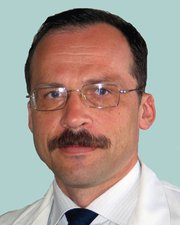 Prof. Arimantas Tamašauskas is director of the Neuroscience Institute and Professor and Chairman of the Department of Neurosurgery at the Lithuanian University of Health Sciences in Kausas, Lithuania. In 1986 he graduated from Medical School and received his PhD 1994 for the thesis "Neurosurgical management of patients with ruptured cerebral aneurysms in hospital population of Lithuania". He habilitated in 2001 with the thesis "Features of Surgical Management of the Intracranial Disorders in the Skull Base" at the Lithuanian University of Health Sciences. Until now Prof. Tamašauskas contributed to more than 200 scientific publications.
Prof. Arimantas Tamašauskas is director of the Neuroscience Institute and Professor and Chairman of the Department of Neurosurgery at the Lithuanian University of Health Sciences in Kausas, Lithuania. In 1986 he graduated from Medical School and received his PhD 1994 for the thesis "Neurosurgical management of patients with ruptured cerebral aneurysms in hospital population of Lithuania". He habilitated in 2001 with the thesis "Features of Surgical Management of the Intracranial Disorders in the Skull Base" at the Lithuanian University of Health Sciences. Until now Prof. Tamašauskas contributed to more than 200 scientific publications.
Session: Welcome by the Lithuanian University of Health Sciences

Julia Trattnig studied Roman Languages, Political Science and Gender Studies at the University of Vienna and at the University of Graz. In her master theses about gender roles in the colonial context of Indochina and about online hate speech against women, she was able to link her liberal arts degree and socio-scientific studies in an inter- and transdisciplinary way.
She completed several internships in the media sector (ORF, Kleine Zeitung) and at different NGOs in Vienna (Frauenhetz) and Graz (Anti-Discrimination Office Styria). She has been working for convelop since March 2020 and is able to use her background knowledge on gender, diversity, equality policy and content analysis to add further expertise to the team. As a scientific staff member, she fulfils diverse tasks such as research, reporting and structural organisation.
Workshop: Career Chat: How to develop a brainy career
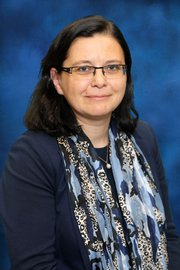 Dr. Inga Ulnicane has more than ten years of international and interdisciplinary research, teaching and engagement experience in the field of science, technology and innovation policy and governance. She has published on topics such as international research collaboration, European integration in science and technology and the Grand societal challenges concept as well as undertaken commissioned studies for European Parliament and European Commission. Currently she is a Research Fellow at De Montfort University (Leicester, UK). She is part of the HBP Responsible Research and Innovation work package (WP9). She is Chair of the Human Brain Project’s Dual Use working group. Her current research topics include governance of Artificial Intelligence, dual use and research infrastructures.
Dr. Inga Ulnicane has more than ten years of international and interdisciplinary research, teaching and engagement experience in the field of science, technology and innovation policy and governance. She has published on topics such as international research collaboration, European integration in science and technology and the Grand societal challenges concept as well as undertaken commissioned studies for European Parliament and European Commission. Currently she is a Research Fellow at De Montfort University (Leicester, UK). She is part of the HBP Responsible Research and Innovation work package (WP9). She is Chair of the Human Brain Project’s Dual Use working group. Her current research topics include governance of Artificial Intelligence, dual use and research infrastructures.
Workshop: Aligning research and innovation with societal needs: ethics & dual use
SCIENTIFIC PROGRAMME
![]() Download the scientific programme (1.4 MB)
Download the scientific programme (1.4 MB)
Wednesday 26 May 2021 | 11:00–17:00 CEST
Welcome & Introduction to HBP & EBRAINS | 20 min Katrin Amunts (Forschungszentrum Jülich) |
Welcome by the Lithuanian University of Health Sciences | 20 min Rimantas Benetis (Rector) & Arimantas Tamašauskas (Director Neuroscience Institute) (Lithuanian University of Health Sciences) |
| Coffee Break |
Plenary Session I: Neuroimaging in Health & Disease | 80 min Svenja Caspers (Forschungszentrum Jülich): Interindividual variability of brain phenotypes – Petra Ritter (Charité University Medicine Berlin) |
| Community Lunch |
Round table: EBRAINS for next-generation brain medicine | 40 min Borana Dollomaja (Aix-Marseille University) Marja-Leena Linne (Tampere University) Andrius Radžiūnas (Lithuanian University of Life Sciences) Philippe Ryvlin (CHUV) Arleen Salles (Uppsala University) Moderation: Viktor Jirsa (Aix-Marseille University) |
| Coffee Break |
Young Researchers Presentation I: Digital phenotyping in neuro-oncology | 40 min Adomas Bunevičius (Lithuanian University of Health Sciences) |
| Coffee Break |
|
Aligning research and innovation with societal needs: Deep characterisation of brain-phenotype relations The Virtual Brain Cloud |
Thursday 27 May 2021 | 11:00–17:00 CEST
|
Plenary Session II: EBRAINS Brain atlases | 60 min |
| Coffee Break |
|
|
| Community Lunch |
|
|
| Coffee Break |
|
EBRAINS data sharing and use of multilevel Using EBRAINS for your scientific use case The Medical Informatics Platform – MIP, a privacy-aware and GDPR-compliant Career Chat: How to develop your brainy career |
| Coffee Break |
|
|
SCIENTIFIC CHAIR
Katrin Amunts | HBP Scientific Research Director & Chief Science Officer, EBRAINS
PROGRAMME COMMITTEE
Katrin Amunts | Forschungszentrum Jülich, Germany
Christine Bauquis | EBRAINS, Belgium
Alice Geminiani | University of Pavia, Italy
Judith Kathrein | Medical University Innsbruck, Austria
Jean-François Mangin | CEA, France
Nicolas Caesar Petersen | Danish Board of Technology, Denmark
Maja Amedjkouh Puchades | University of Oslo, Norway
Ingrid Reiten | University of Oslo, Norway
Aušra Saudargienė | Lithuanian University of Health Sciences
Julia Trattnig | convelop, Austria
Julia Quintero | Medical University Innsbruck, Austria
ORGANISERS
HBP Education Programme Office
workshop.edu@humanbrainproject.eu
PARTNER


